Today begins the era of DDR3 for AMD. Unfortunately, not all boards are ready yet, so we had no choice but to test it with a DDR2 board. The good news is that the new Phenom II X4 810's memory controller can handle both DDR2 and DDR3.
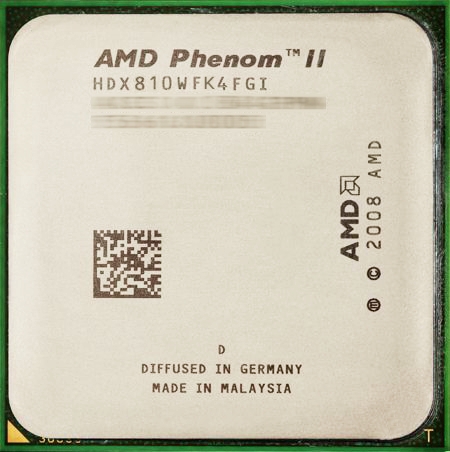
The major difference between the 900 series is the reduced L3 cache size, down from 6MB to 4MB. Apart from that, the new CPU features a 95W TDP envelope, which OEM integrators might find particularly interesting. Because it's not a Black Edition, overclocking can only be managed via the integrated clock-generator - the "virtual FSB".
Testbed:
Motherboard:
MSI DKA790GX (provided by MSI)
Gigabyte GA-MA790GP-DS4H (provided by AMD)
AMD 790GX/SB750
CPU:
AMD Athlon X2 3800+ EE
AMD Athlon X2 4850e (provided by AMD)
AMD Athlon X2 7750 (provided by AMD)
AMD Phenom 9850 Black Edition (provided by AMD)
AMD Phenom II 810 (provided by AMD)
AMD Phenom II 940 Black Edition (provided by AMD)
Intel E7200 (provided by K&M Elektronik)
Intel Q9450 (provided by Intel)
CPU-Cooler:
Scythe Andy Samurai Master (provided by Scythe-Europe)
Memory:
Kingston 2GB Kit PC2-9600U KHX1200D2K2/2G (provided by Kingston)
CL4-4-4-12 CR2T at 1.80V
Graphics Card:
Jetway Radeon HD3870 (provided by mec-electronics)
Power supply:
Seasonic S12II 500W
Hard disk:
Samsung Spinpoint F1 (provided by Ditech)
Case fans:
SilenX iXtrema Pro 14dB(A) (provided by PC-Cooling.at)
Scythe DFS122512LS
Case:
Cooler Master Stacker 831 Lite (provided by Cooler Master)
The Phenom II 810's default clock is 2.60GHz, but with a fairly high 1.300V VCore. As we have already stated in our Phenom II 940 Review, this is quite high for a 45nm CPU, but less cache should help to keep the energy consumption lower.
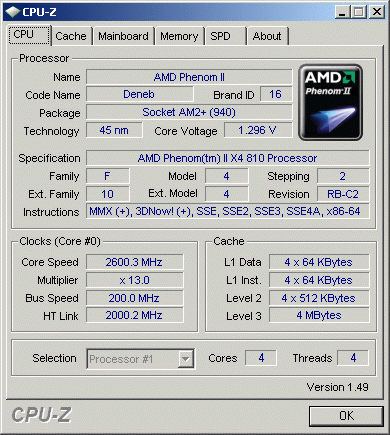
Overclocking in BIOS is not that easy. First you have to increase the virtual FSB, then you have to calculate the HT speed, so you should make sure not to exceed it by too much, as that would make your system unstable. Besides that, your memory speed will also increase, so either lower it or buy modules which support speeds of 1000MHz and more. The new BIOS 1.60 for the MSI DKA790GX features new overclocking options. You can set the voltages not only for the core, but for all the parts of the CPU, including the integrated northbridge. This helps in lowering the VCore, but due to other higher voltages, the power consumption will suffer greatly. After some testing, 100% stable results were achieved at 3.406GHz, which is nice, since it's a hefty 800MHz overclock.
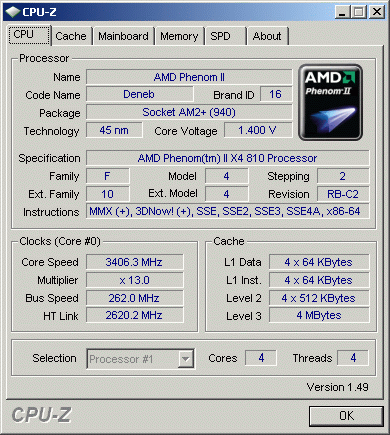
While idling the CPU downclocks to 800MHz and the VCore drops to 1.0000V, regardless of the VCore setting in the BIOS. This may cause trouble with overclocking, but our CPU ran fine with Cool'n'Quiet enabled, because the other voltages were high enough. Disabling Cool'n'Quiet will cause a 20W to 30W increase in power consumption while idling.
Our benchmarks are quite self-explanatory. Apart from the usual benchmarks, we included the Far Cry 2 Bench, which should only show the benefit of a faster CPU.
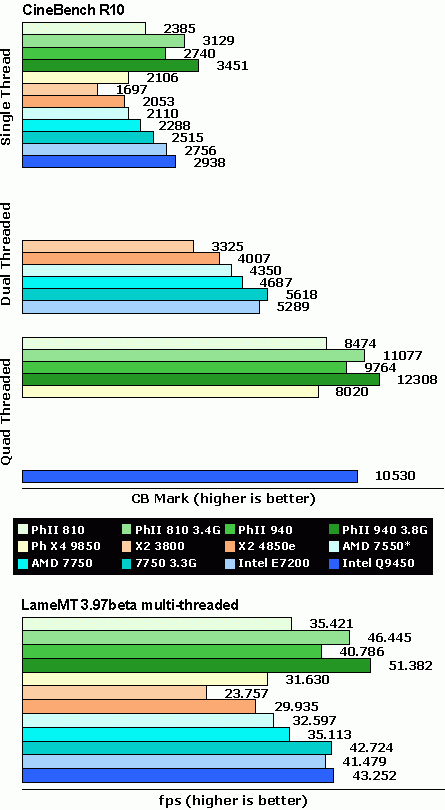
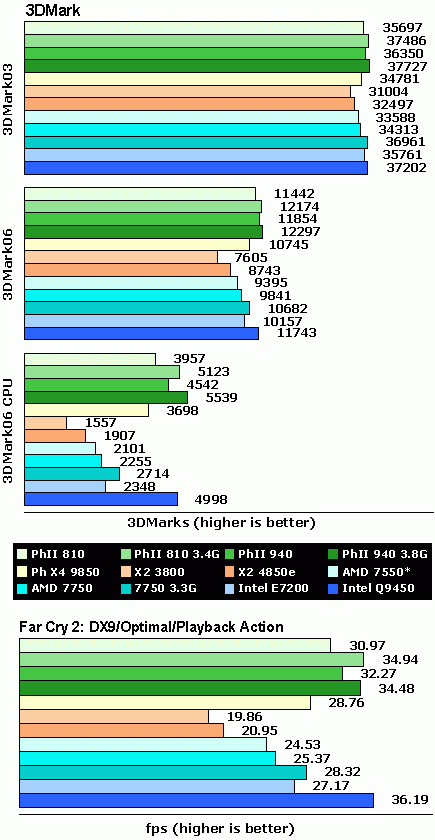
As you can see, the Phenom II is closing the gap against Intel's offer quite nicely. Unfortunately, AMD has not improved the SSE units as much as we hoped they will, and as such still falls behind Intel when it comes to encoding and multimedia. When gaming, you shouldn't notice any significant performance loss, but of course - the faster the graphics card, the better. Far Cry 2 shows better results at only 3.4GHz, compared to 3.8GHz on the Phenom II 940 because the memory runs at 1048MHz instead of 800MHz.
The most disappointing thing about the new Phenom II is the high TDP rating. While Intel's Quads now have the same TDPs, they do not use that much power. Also, there is virtually no difference between the 810 and the 940, and AMD's CPUs show a higher consumption increase after overclocking.
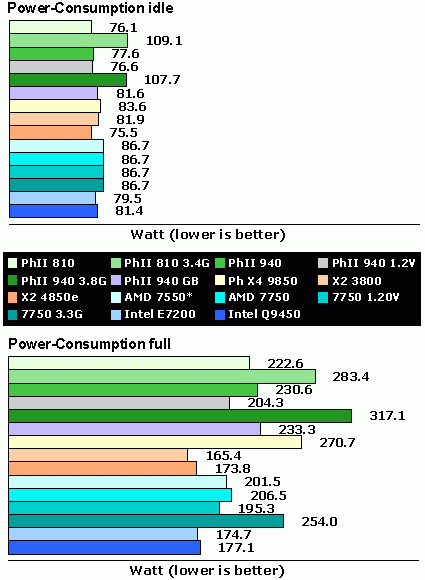
Our suggestion is to try to undervoltage the CPU as much as possible, as it will lower the power-consumption considerably.
Conclusion:
We were interested in how the CPU will do with DDR3, but due to the fact that the boards are not yet available, we had to perform our tests with a DDR2 board. We suspect that the gain will only be marginal, and since DDR2 is still cheaper, it does not make much sense to switch to the new platform. Even AMD itself said to expect some three to five percent more from DDR3 based platforms, but we will test this soon enough.
The CPU runs as expected - a 400MHz clock difference and 2MB less 3rd level cache don't make a big impact. In fact, it seems like the cache size does not matter at all. AMD has slashed the prices of its 900 series, which now start at about €175,- in Euroland, whereas the new CPU is nearly the same price, at about €170,-. So, you get 2MB and 200MHz less compared to the cheapest 920 CPU, but the DDR3 memory controller comes at a premium.
If you want a future proof CPU, get yourself an Phenom II 810, as it will work well with your future DDR3 motherboard. On the other hand, if you simply want a CPU with more cache and better overall spec, then the Phenom II 920 at the same price might be a better option.
Overall, the Phenom II 810 is a good CPU with nice overclocking potential, but DDR3 memory support will cost you a premium. You can always use it with DDR2 and save some money, and get almost the same performance.


